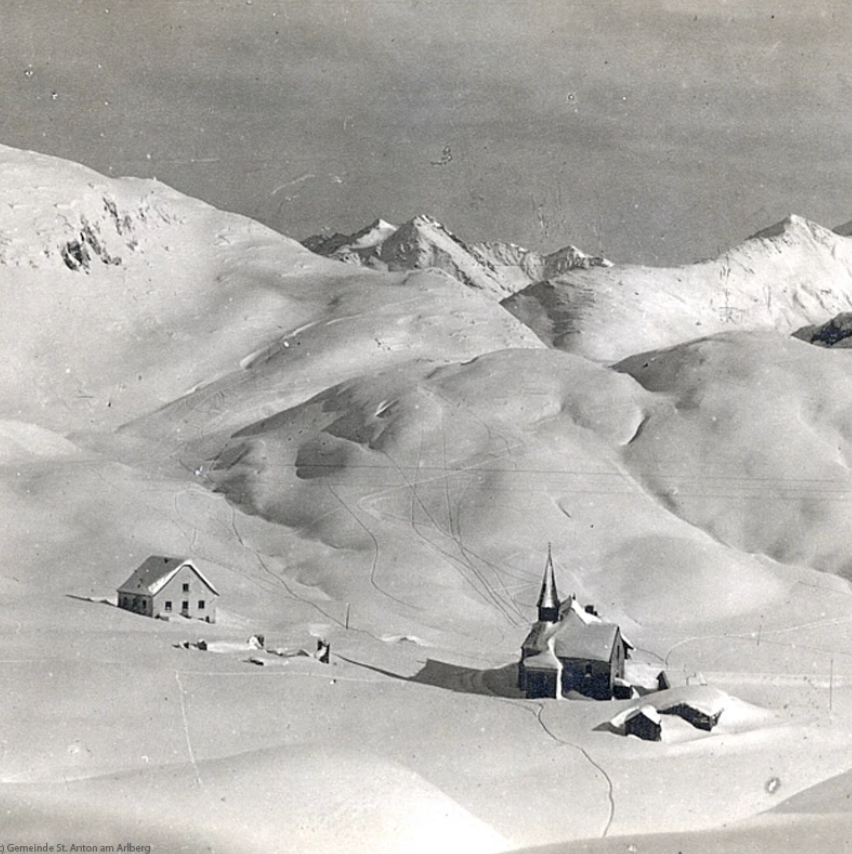St Anton am Arlberg is one of our favourite resorts, not just in Austria, but across all of Europe.
Now widely regarded as one of the world’s best ski resorts, the origins of the town are much more humble.

‘Prone to landslides and avalanches’
People passed through the valley via the Arlberg Pass on a mule track as long ago as the Bronze Age, but there has been a ‘road’ since the 14th century.
According to the St Anton tourist office that route was ‘prone to landslides and avalanches and almost impassable in winter’, but it was an important link so people continued to travel.
In 1386, Heinrich Findelkind built a literal refuge for travellers, and subsequently founded the Arlberg Hospice in St Christoph.
It wasn’t until the 18th century that the road was improved. In 1787, the ‘Josephine Road’ over the Arlberg pass had been built by traders from Bolzano in Italy.

The age of the train
The single biggest change for St Anton came a century later, when St Anton was connected to the Austrian rail network.
When the UNESCO-listed Semmering Railway was opened in 1854, passing through 41km of mountain terrain, it proved that mountain railways were possible, even in the most demanding environments.
Work started on the ‘St. Anton am Arlberg’ stop in the 1880s, even though at the time the village was still known as Nasserein. The station initially acted as a water supply stop for steam locomotives and was a changeover point for the engines.
St Anton population doubles
The railway changed everything for St. Anton. During construction of the Arlberg tunnel, over two thousand workers from across the Habsburg Empire tripled the size of the existing population.
The development was not universally supported. The priest of St. Jakob later wrote of the challenges that locals faced:
“For the men, the dangers of hedonism, in particular drunkenness, transgression of fasting days and desecration of Sundays, were the greatest. And for the women, especially the virgins, the temptation of moral corruption was immense.“

A destination at last
The train led to tourism and the start of St Anton’s reputation as a ‘destination’, rather than a point of transit. Increasing numbers of tourists from other countries arrived by train to take their holidays in the Arlberg.
1896 was a pivotal year, as Carl Schuler opened the 110-bed Hotel Post, which offered the luxuries of central heating, electric light, a bowling alley and a tennis court.
More tourists and hoteliers followed, skiing and ski lifts joined the activities on offer and the rest, as they say, is history.

Ski holidays in St Anton
If you’d like to enjoy a ski holiday in St Anton, but don’t know where to start, then please contact Chaletline.
Our team of experts will listen to your requirements and recommend the right property for your group. Simply contact us via our website or call us on 01822 617761.



